
You can find ample information about OKRs over the internet, but to date, many businesses and individuals are struggling to make the correct use of it. OKRs are not something that you can master instantly. To master the art of OKRs, you need to have some in-depth knowledge that can be gained from the best OKR books because they are specifically designed to help people understand the concept of OKRs.
For a newbie, it is difficult to create and track OKRs in the correct way. To understand the OKR framework, there are many excellent books that can help you understand the philosophy behind OKRs.
In this article, we have mentioned all the best OKR books that are written by renowned authors. These books can help you unlock the secrets behind OKRs to achieve astonishing results.
1 - The Beginner’s Guide to OKR by Felipe Castro
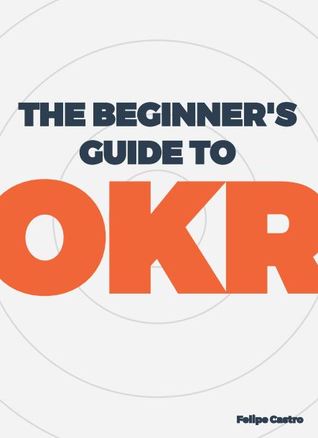
This book is written by Felipe Castro and is one of the greatest resources on OKRs because it is written keeping beginners in mind. Before starting OKRs, it is necessary to get familiar with the basic concepts of OKR. If you don’t have much knowledge of OKRs, then it is one of the best resources that you should read to start your journey towards OKRs.
This book covers 11 different sections listed below:
What is OKR?
This section describes the OKR history and companies that successfully used OKRs. He also discusses the components and examples of OKR in this section along with the tips of writing the best OKRs.
What are the benefits of using OKR?
Here, he describes all the key benefits that you can gain by using OKRs.
Strategic vs. Tactical OKRs: Nested Cadences
This section is focused on describing the strategic and tactical OKRs.
OKRs do not Cascade
This section discusses OKRs cascading.
Success criteria and types of Key Results
Here he discusses all the success criteria of OKRs in detail along with a wide range of key results.
How ambitious should your OKRs be?
This section of his book deals with ambitious goals along with their characteristics.
Creating Alignment
In this segment, he discusses three different alignment mechanisms.
Tracking Results with the Weekly Check-in
Here he mentions the significance of tracking the results related to OKRs on a weekly basis along with check-in structure.
A Typical OKR Cycle
In this section, he describes the entire OKR cycle in detail.
Why you should separate OKR and compensation
Here he discusses the difference between OKR and compensation because he said that OKR is only a management tool instead of an employee evaluation tool.
Common OKR mistakes
In this section, he listed all the common mistakes that occur while implementing OKRs.
2 - Measure What Matters by John Doer
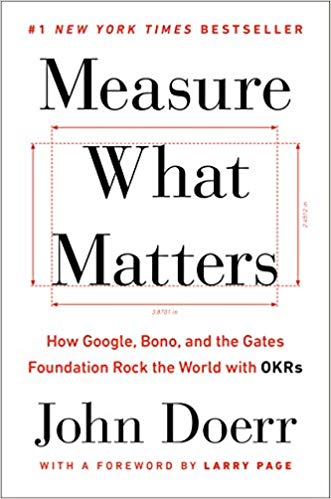
This book is written by John Doer. He invested around 12 million dollars in a startup in 1999, which is now known as Google. He saw that the company has some amazing technology, high ambitions, but no clear business plan. That’s why he introduced the concept of OKRs with the founders of the company. Applying that outstanding framework, the company grew from 40 employees to above 70,000 employees.
In his book Measure What Matters, he provides quite valuable information regarding OKRs that consists of 21 chapters listed below:
Chapter 1– Google, Meet OKRs
Chapter 2 – The Father of OKRs
Chapter 3 – Operation Crush, an Intel Story
Chapter 4 – Superpower #1: Focus and Commit to Priorities
Chapter 5 – Focus: The Remind Story
Chapter 6 – Commit: the Nuna Story
Chapter 7 – Superpower #2: Align and Connect for Teamwork
Chapter 8 – Align: The My Fitness Pal Story
Chapter 9 – Connect: The Intuit Story
Chapter 10 – Superpower #3: Track for Accountability
Chapter 11 – Track: The Gates Foundation Story
Chapter 12 – Superpower #4: Stretch for Amazing
Chapter 13 – Stretch: The Google Chrome Story
Chapter 14 – Stretch: The YouTube Story
Chapter 15 – Continuous Performance Management
Chapter 16 – Ditching Annual Performance Reviews: The Adobe Story
Chapter 17 – Baking better every day: The Zume Pizza Story
Chapter 18 – Culture
Chapter 19 – Culture Change: The Lumeris Story
Chapter 20 – Culture Change: Bono’s ONE Campaign Story
Chapter 21 – The Goals to Come
3 - Radical Focus: Achieving Your Most Important Goals with OKRs by Christina Wodtke
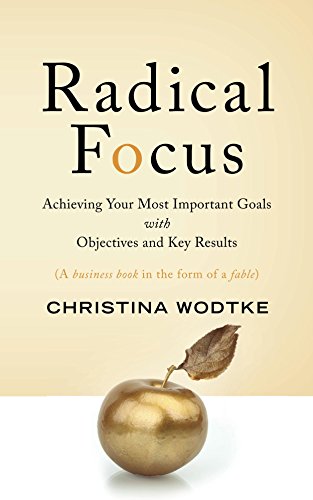
This book is written by Christina Wodtke. In this book, she illustrates the basics of OKRs using a fictional story, the best approach to implement OKRs, how to inspire the entire team to get excellent results using OKR despite setbacks.
She describes the entire system in three different parts listed below:
1 – Setting goals that are inspiring and measurable
2 – Ensuring that the entire team is progressing towards the chosen end state.
3 – Setting a cadence to ensure that a complete team that is working towards a goal, knows their end achievements, and have the capability to hold accountable to the right person.
She also recommended a weekly cycle according to which Monday is the check-in day for the whole team and also describes the 4 quadrant box to list things according to the priorities.
4 - High Output Management by Andy Grove
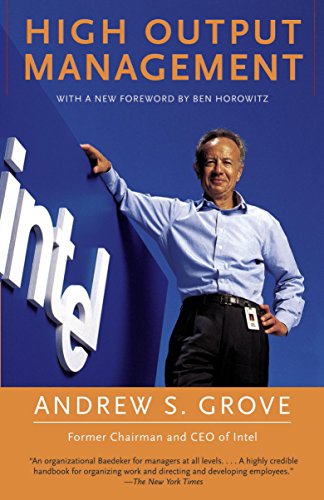
This book is written by Andy Grove, former CEO of Intel. In this book, he reveals many tips and strategies regarding management. He describes that if you want to enhance the output of your organization then you should start with training yourself first.
His book consists of 17 Chapters listed below:
Chapter 1 - Everything is process.
Chapter 2 - Focus on vital, measurable indicators of output.
Chapter 3 - Managerial leverage dramatically impacts organizational output.
Chapter 4 - Meetings are a medium of work.
Chapter 5 - Decisions are the output of a process framed by six questions.
Chapter 6 - Manage short-term objectives based on long-term plans.
Chapter 7 - As organizations grow speed decreases while leveraging increases.
Chapter 8 - Functional teams increase leverage, mission-oriented teams increase speed.
Chapter 9 - Dual reporting increases both leverage and speed.
Chapter 10 - Manage teams by setting expectations and cultural values.
Chapter 11 - Motivate employees by “shaping the field” based on what drives them.
Chapter 12 - Manage in the context of task-relevant maturity.
Chapter 13 - Use performance reviews to improve performance.
Chapter 14 - When an employee quits, it’s the manager’s fault.
Chapter 15 - Recycle high achievers who are over-promoted.
Chapter 16 - Training is the manager’s job.
Chapter 17 - Assess your own output.
5 - How to Measure Anything by Douglas W. Hubbard
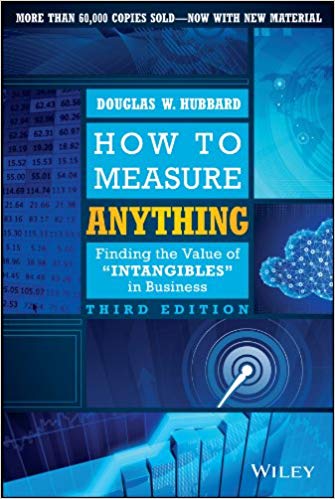
This book is written by Douglas W. Hubbard. In this book, he describes the challenges faced by the business while setting OKRs and provides an in-depth explanation regarding how to measure things to make them less risky and profitable.
He breaks this book into three different parts including theory, tools, and examples and also discusses the examples from real life.
He defines his method as “Applied Information Economics” in this book that contains 5 steps listed below:
Step 1 - Define a decision problem and the relevant variables.
Step 2 - Determine what you know.
Step 3 - Pick a variable, and compute the value of additional information for that variable.
Step 4 - Apply the relevant measurement instrument(s) to the high-information-value variable.
Step 5 - Make a decision and act on it.
6 - How Google Works by Eric Schmidt and Jonathan Rosenberg
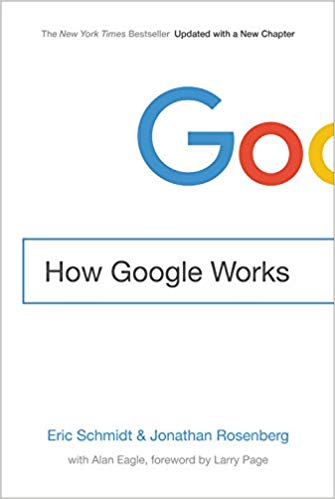
This book is written by Eric Schmidt and Jonathan Rosenberg. In this book, they discuss in detail how they helped google to transform from a startup to one of the leading technology companies. They also described key things that they knew regarding OKR and management.
The key topics discussed in this book include:
Company Culture
Before starting a company, it is necessary to define the company culture. In this section, they described the company culture set by Google. They also mentioned that there are very minimal changes in their culture since its inception.
Company Strategy
Every company works on some specific strategy. In this part, they described the strategy on which Google works. It consists of three different steps.
- Bet on technical insights, not market research.
- Optimize for growth, not for revenue.
- Let great products grow the market for everyone.
Company Talent
In order to boost productivity, a company should have talented people in the pool. In this section, they discussed the recruitment process of Google. Their process consists of a committee of interviewers that takes the final decision regarding bringing the best talent to Google.
Company Decision-Making Process
In this segment, they describe the decision-making process at Google.
Company Communication
In this part, they describe the communication process of Google.
Company Innovation
In this section, they discuss the innovative products made by Apple and Google.
7 - Work Rules by Laszlo Bock
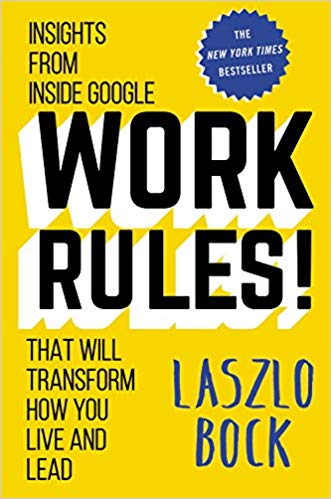
This book is written by Laszlo Bock, Visionary head of People Operations at Google. In this book, he discusses the importance of OKRs and how to step up and track OKRs to achieve better results.
He also explains how Google has created an attractive culture that grabs the attention of global talent.
This book of Laszlo bock consists of 14 Chapters listed below:
Chapter 1 - Becoming a founder
Chapter 2 - Culture eats strategy for breakfast
Chapter 3 - Lake Wobegon, where all the new hires are above average
Chapter 4 - Searching for the best
Chapter 5 - Don’t trust your gut
Chapter 6 - Let the inmates run the asylum
Chapter 7 - Why everyone hates performance management, and what we decided to do about it
Chapter 8 - The two tails
Chapter 9 - Building a learning institution
Chapter 10 - Pay unfairly
Chapter 11 - The best things in life are free (or almost free)
Chapter 12 - Nudge … a Lot
Chapter 13 - It’s not all rainbows and unicorns
Chapter 14 - What you can do starting tomorrow
8 - Objectives and Key Results – Driving Focus, Alignment, and Engagement with OKRs by Paul Niven and Ben Lamorte
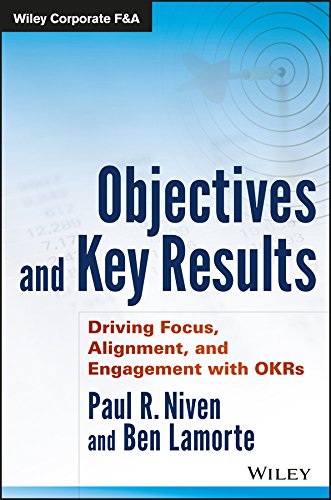
This book is written by Paul Niven and Ben Lamote. It is a one-stop guide for all the organizations looking to understand the entire concept of OKRs. In this book, they describe how top companies use OKRs successfully. This book covers almost all the key topics like OKR basics, best practices, case studies and real-world examples to help you become OKR master.
This book is divided into four different sections listed below:
- Basics of OKRs and their daily use.
- Successful implementation of OKR.
- Creating an effective OKR strategy using key tips.
- Tailor the OKRs framework according to your company requirements.
Final Words
One of the major reasons why people struggle setting and achieving OKRs is because they have no idea regarding OKR structure, principles, and OKR best practices. The books listed above have all the relevant information from basic to expert levels to help you get started with the OKR approach.
We hope you enjoy reading these books because they are not only informative but also full of tips and tricks to take your OKR game to a whole new level.

More Posts
16 Daily Planning Tips to Balance Work and Life
![Daily Planning Tips to Balance Work and Life]() You may juggle various roles, tasks, and responsibilities daily, making it challenging to achieve a healthy work-life balance. However, work-life balance is not a myth—it's...
6 Golden Rules of Planning & Setting To Consider
Planning is vital to any successful project. The more you plan, the better your project will be and the less stress you will feel. However, planning can be quite challenging. Planning can be...
30 Games & Activities to Enhance Time Management
When you hear the term ‘time management', your heart races. Sweat beads on your forehead. You feel a crushing sense of urgency. Time’s running away, and you're chasing after it! We’re here to...
Top 6 Goal Planners for CEOs (Free & Paid)
In the dynamic business world, CEOs must juggle multiple tasks while maintaining a strategic vision for their organization. With responsibilities ranging from setting goals, and tracking progress, to team collaboration, having a systematic...